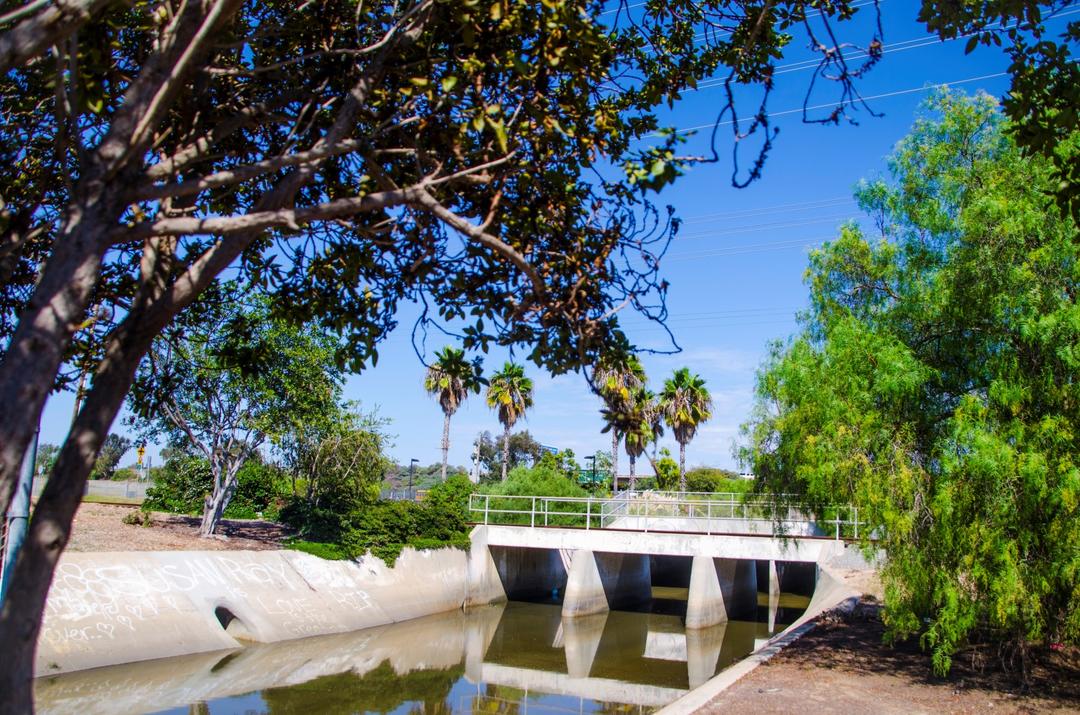Stormwater Requirements Applicability Checklist
Use the Stormwater Requirements Applicability Checklist to determine your project's permanent and construction stormwater best management practices requirements.
Stormwater Requirements Applicability Checklist
Questions regarding this checklist may be directed to Melissa Dailey, Environmental Protection, at 619.686.8088.
Permits and Guidance Documents
- Regional Water Quality Control Board Order No. R9-2013-0001, National Pollutant Discharge Elimination System (NPDES) Permit No. CAS0109266, (Municipal Permit)
- State Water Resources Control Board (SWRCB), Order WQ 2022-0057-DWQ, National Pollutant Discharge Elimination System (NPDES) General Permit For Stormwater Discharges Associated With Construction and Land Disturbances Activities (General Permit) No. CAS000002
- Caltrans Construction BMP Manual
- CASQA BMP Handbooks
Port Best Management Practice (BMP) Design Manual
The Port BMP Design Manual provides procedures for planning, selecting, and designing permanent structural stormwater BMPs based on specific performance standards outlined in the Municipal Permit. The Port’s BMP Design Manual is consistent with the Model BMP Design Manual developed collectively by the San Diego County copermittees.
Port Best Management Practice (BMP) Design Manual
Stormwater Forms and Stormwater Quality Management Plan (SWQMP) Documents)
Pursuant to the Municipal Permit, all new development and redevelopment projects are required to complete and submit to the Port a Stormwater Quality Management Plan (SWQMP). The SWQMP details how the project will meet stormwater requirements outlined in the Port’s BMP Design Manual. Projects categorized as Priority Development Projects (PDPs) and Green Streets must incorporate structural treatment controls into the site design and, where applicable, and address potential hydromodification impacts from changes in flow and sediment supply. Refer to the Port's Stormwater Requirements Applicability Checklist (included in the Tenant Project Application) to determine your project’s requirements. Please utilize the Port templates for your project. The Port must review and approve the SWQMP document prior to the project start.
Please note: Environmental Protection requires a two-week window for stormwater submittal review.
- Port Standard SWQMP Template (MS Word)
- Priority Development Project SWQMP Template (MS Word)
- Green Streets SWQMP Template (MS Word)
- Form RM-1 Conditional Routine Maintenance Documentation (MS Word)
- Form RM-1 Conditional Routine Maintenance Documentation (PDF)
- Form K-1 BMP Applicability and Selection for Walkways Exemption (MS Word)
- Form K-1 BMP Applicability and Selection for Walkways Exemption (PDF)
- PORT BMP OPERATIONS AND MAINTENANCE PLAN (MS WORD)
Note: Word documents download automatically.
Construction Phase Stormwater Document Templates
The Port requires projects that involve construction activity on Port tidelands to prepare and submit a document that identifies the project's construction-related activities that may affect stormwater quality and describes how pollution prevention measures will be utilized accordingly. The Port also requires minimum best management practices (BMPs) for all construction projects on Port tidelands. These minimum BMPs are listed in the Port Jurisdictional Runoff Management Plan (JRMP) document, Chapter 5. Refer to the Port's Stormwater Requirements Applicability Checklist (included in the Tenant Project Application) to determine your project’s requirements. The use of the Port's Construction BMP Plan and SWPPP templates are required.
For projects less than one acre:
For projects greater than one acre:
Request for Approval of Disturbed Soil Area Temporary Waiver
Project Priority Level for Storm Water Pollution Prevention Plans (SWPPPs)
The Municipal Permit requires that construction sites are assessed on their potential threat to water quality. Every construction project on Port tidelands must be assessed and prioritized based on the project’s threat level during the project approval process.
The Port has developed guidelines for prioritizing Port construction sites. The highest priority category under which a project falls will be the priority classification. Each construction project will be categorized into low, medium, high, and exceptional priority levels.
Use the following tables to determine the project’s priority level. First, determine how many wet seasons will the project activities will occur during (none, one, or more). Once this has been determined, then use the appropriate table to find the project’s priority level.
| For projects where construction activities will occur during no wet season or one wet season: | ||||
| Project Size | Less than 1 acre | 1-5 acres | 5-50 acres | Greater than 50 acres |
| Not in or over a receiving water | Low Priority | Medium Priority | High Priority | Exceptional Priority |
| In or over a receiving water | High Priority | High Priority | High Priority | Exceptional Priority |
| For projects where construction activities will occur during more than one wet season: | ||||
| Project Size | Less than 1 acre | 1-5 acres | 5-50 acres | Greater than 50 acres |
| Not in or over a receiving water | Medium Priority | High Priority | High Priority | Exceptional Priority |
| In or over a receiving water | High Priority | High Priority | High Priority | Exceptional Priority |
The priority level must be noted in the project SWPPP and on the SWPPP inspection checklist. The outcome of this assessment dictates construction inspection frequencies, temporary BMP requirements, and the need for advanced treatment systems discussed in The Port’s JURMP. It should be noted, that the Port may reconsider and reassign a higher priority level of a construction site if a violation occurs during the course of the project or if the factors of the project change.
